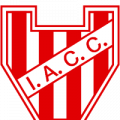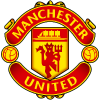The quality of full-backs in the league are starkly contrasting by flank, and that is why Juan Mata is a hugely useful outlet on the right flank.
Many have complained that Juan Mata's impact for Manchester United is heavily minimised as Louis van Gaal has consistently installed him on the right flank.
Of course, by no means has this forced Mata, now 27, to become a winger. He is the antithesis of a winger, of someone like Memphis Depay or Ashley Young. Instead he is a clear demonstration of an inside forward, the player cutting inside whether they have the ball or are searching for it.
Mata in inside forward role at United
Some call it drifting but in reality Mata is following instructions closely to force play onto the left side. This comes with good reason. The attributes of Mata - the weaknesses - of being slow, requiring time on the ball, and a natural sense to look for the killer pass, means a central role, the ever-sought after role at United, is Mata's ideal position. However, those weaknesses also mean the inside forward suits Mata to a good level too, a level good enough to be in the Manchester United first team.
Even with these obvious reasons to put Mata as an inside forward, with the central role behind Wayne Rooney filled with suitors like Memphis, Januzaj, Mata, Fellaini, Herrera, Pereira, some fans still doubt this decision by Van Gaal.
There is another big reason that sees Van Gaal's choice to never associate Mata, a truly gifted individual, with the central role at Old Trafford. For the last three years in the Barclay's Premier League, the right-back position has been missing someone like Gary Neville. Branislav Ivanovic has often been picked out as the outstanding right-back of the league, yet even with accolades falling on his doorstep, the mantle as a truly great right-back cannot go to Ivanovic. We have already seen in the first three games of the season that when Chelsea are not strong, Ivanovic is also less powerful, less intimidating, less outstanding.
Right-backs in weak position in Premier League, left-backs brilliant
Seamus Coleman is a player who truly is a fantastic follow up to Neville, and the man himself has praised the Irishman. However, while the right-back union is struggling to produce more than Coleman and Ivanovic, the left-backs in England are flourishing.
United's own Luke Shaw has been in fantastic form, finally succeeding for the Reds after a difficult first season. Meanwhile, Leighton Baines has been a mainstay in - or nominated for - the PFA Premier League Team of the Year since the 2011/12 season.
Shaw himself earned a place in the collection of the nation's best players while Ryan Bertrand, another Englishman, was in it last year. All three of these English left-backs are still in the league and the latter two, Shaw and Bertrand, are getting better with each week they play.
Cesar Azpilicueta is another good left-back, playing opposite to Ivanovic at Chelsea, who have now signed Baba Rahman from Augsburg for a considerable fee, further extending the list of good left-backs in the league.
Aleksandar Kolarov and Pablo Zabaleta are at Manchester United's neighbours City and the list could go on.
For this reason, is why someone like Mata, someone who isn't a truly world-class winger, who is not a Cristiano Ronaldo or a Neymar or a Gareth Bale or an Eden Hazard, there is no chance - or only a limited one - of succeeding against the range of left-backs who are all of a high quality.
If we look the heatmaps of Juan Mata and various other so-called 'right-wingers' in the Premier League, it is with ease that you notice a stark contrast in player type.
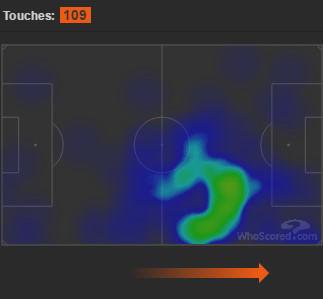
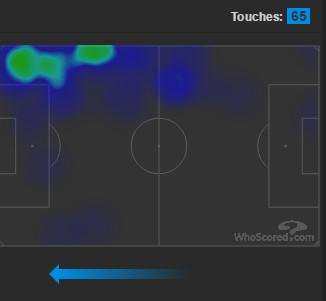
There is a clear line on Juan Mata's heatmap as he curves inwards towards the central role which Adnan Januzaj occupied in the 0-0 draw with Newcastle. With this shift into the middle of the park, Januzaj becomes more left side focused which in turn forces, deliberately, Memphis Depay to hug the left touchline.
This overload on the right side of the opposition, in this case Newcastle United, means their right-back, the weaker of the two full-backs, is put under huge pressure.
Next to Mata's is Jesus Navas' heatmap against Everton, whom Manchester City beat 2-0 on Sunday. The green sections identify the largest amount of time spent on that spot. There is a huge contrast between Mata and Navas. The latter is hugged against the right touchline, much like Depay for United on the left, and consistently near the byline.
Aaron Ramsey is a successful example of the Juan Mata kind of role.
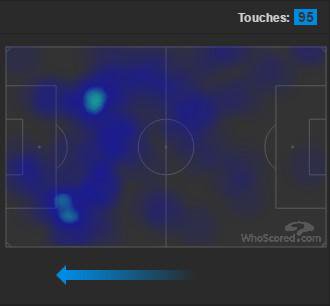
He's very much drifting across the three positions of right, centre and left.
Ramsey is an even more extreme version of Mata in that he barely comes to the right touchline throughout the game.
United played against Newcastle on Saturday, unimpressive in a 0-0 draw, and their opposition had very similar ideas to Louis van Gaal.
Obertan, former-United player, was on the left wing, coming up against United's right back, Matteo Darmian. Meanwhile, Ayoze Perez was against United's left-back, Luke Shaw, playing on the right wing like Juan Mata. Perez' heatmap shows something similar to Ramsey and Mata, 'drifting' inside consistently. In this case it's not due to the quality of full-back because Darmian and Shaw are at similar levels. However, with the common theme throughout the league of the left-back trumping the right-back in terms of quality, Perez - the better ability to drift centrally - is the consistent right winger and Obertan - the better ability to drive down the flank - the consistent left winger.
Another example of this common theme throughout the league is that of Leicester City's James McClean, left winger, and Callum McManaman, right winger.
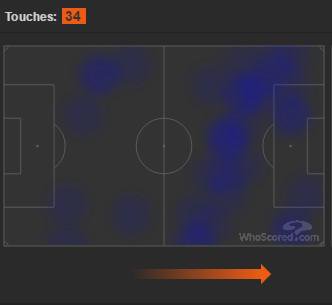

McManaman, the right winger, has a broad width to his game in the attacking third. Not only that but he has gone further forward more commonly on the left side than on the right meaning that he and McClean double up to provide that overload on the right side of defence.
Meanwhile McClean only switches flanks, or even comes inside, very rarely, sticking to his left sided position and thus keeping that overload on one side of defence.
Going back to Juan Mata and Louis van Gaal's decision to use him in such a role on the right side, cutting or 'drifting' inside at almost every opportunity, it is not rare in the Premier League.
It's not rare, in fact it is common, because it is not rare that the right-back of a team is less defensively solid than the left-back. This isn't the case with every side in the league but because it is often the case, teams are now bred to comply and to attack, to overload, that weaker right-back.
Complaints over Mata's role in the Manchester United side should be dismissed because his impact there is huge. If Adnan Januzaj, Antonio Valencia, Ashley Young, Memphis Depay or even Jesse Lingard were in the right-wing position, the play would be evenly spread between the two flanks. That is the opposite of what often brings you three points in the Premier League.






































